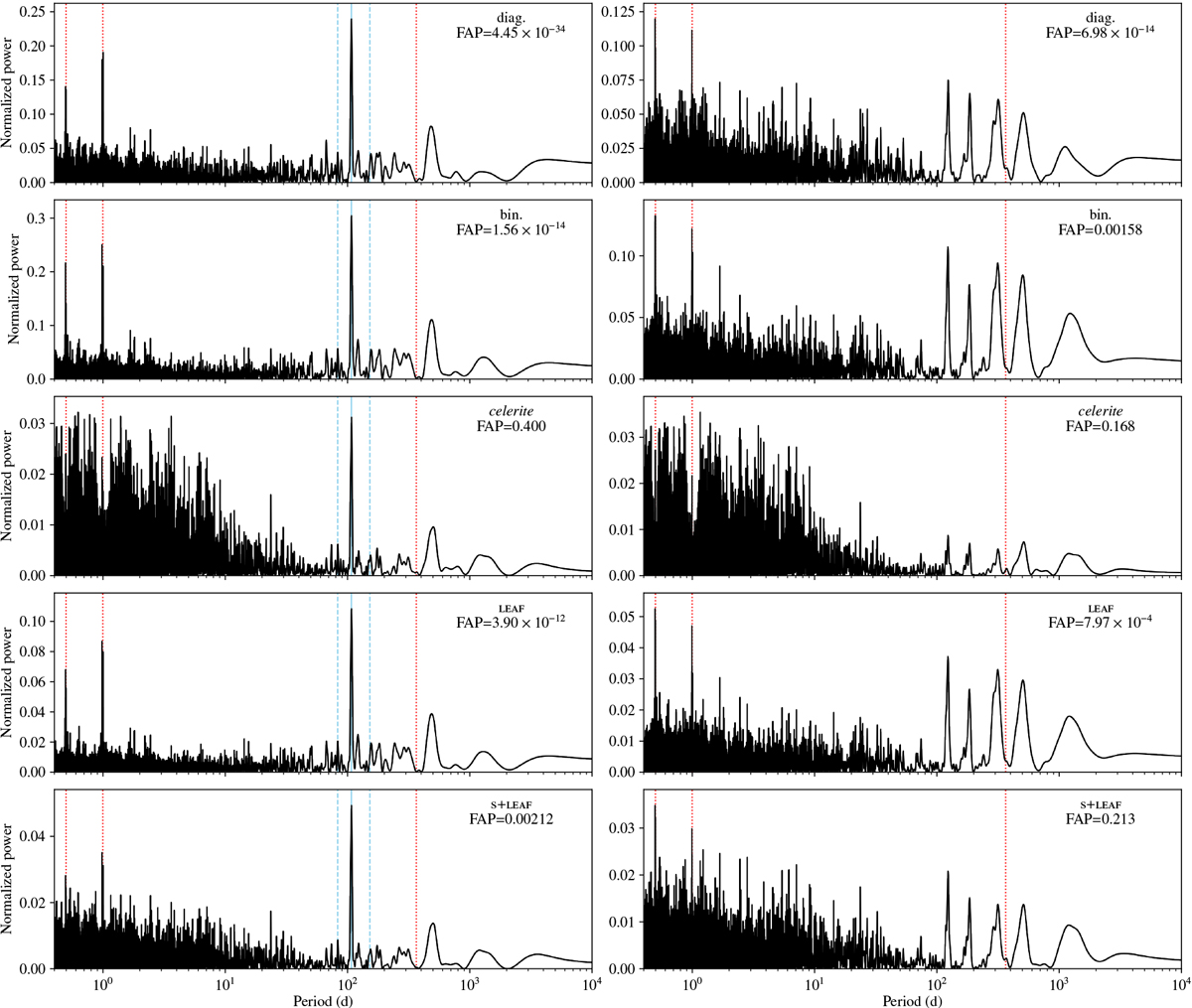Fig. 3

Periodograms of the radial velocity residuals of HD 136352 after subtracting the two first planets (at 11.5824 d and 27.5821 d, left), and after subtracting the three known planets (11.5824 d, 27.5821 d, and 107.6 d right), for the fivenoise models defined in Sect. 3.1. The noise parameters are set to the values provided in Table 1. The vertical blue line highlights the period of the third planet (107.6 d), and the dashed blue lines highlight its aliases at 1 yr. The dotted vertical red lines highlight 0.5 sd, 1 sd, and 1 yr. For the sake of readability, we do not show here the two first periodograms (raw time series and after subtracting the first planet), since the two first planets (11.5824 d and 27.5821 d) are unambiguously detected (highest peaks and FAP < 10−10) independently of the noise model. Assuming that the 107.6 d signal is due to a planet while the signals at 0.5 sd, 1 sd, and around 1 yr are due to correlated noise, we expect the correct noise model to show a low FAP in the left column and a high FAP in the right column.
Current usage metrics show cumulative count of Article Views (full-text article views including HTML views, PDF and ePub downloads, according to the available data) and Abstracts Views on Vision4Press platform.
Data correspond to usage on the plateform after 2015. The current usage metrics is available 48-96 hours after online publication and is updated daily on week days.
Initial download of the metrics may take a while.


